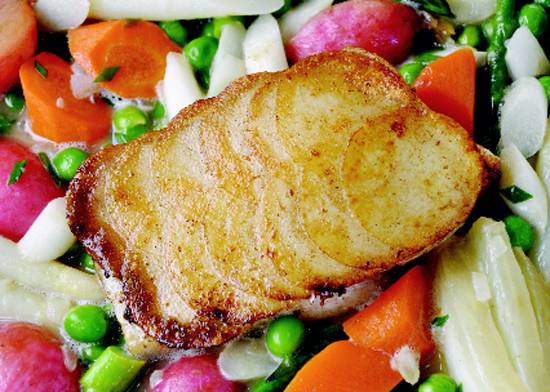In case you've been living under a rock for the past month, Modernist Cuisine is a new series of books that has set the culinary world on fire. More importantly, though, it has finally defined an approach to cooking that had been improperly, and annoyingly labeled as “molecular gastronomy.”

When the Modernist Cuisine team came to ICE to launch the book, I had the opportunity to help work with the team in the kitchens and to hear Nathan Myhrvold, the mastermind behind the books, speak about the process. I was thrilled to hear not only Nathan but also every chef on his team stress to our students the importance of mastering the fundamentals of cooking before expanding their approach to the new methods highlighted in Modernist Cuisine. The problem we all run into is that this idea of modernist cuisine is new — it's flashy and exciting. So while, I'm an enormous fan of Frank Ghery's work, I know that before I set out to design midtown’s newest architectural master piece, I should probably take a few drafting classes — maybe learn something about engineering that goes beyond constructing the crust for a pate en croute. That is why the following recipe for Potato-Crusted Halibut with Vegetable Ragout is one of my favorites.
Visually, it's a great looking dish but doesn't come off as very complex, in fact, other than the potato scales on the fish, it’s really quite simple. It’s that simplicity that makes a dish like this so amazing. You can scan through the photo and pick five or six different vegetables that make up the ragout. No big deal, right? Just toss them all in the pan, get them tender and you’re ready to go. In reality, each of those vegetables has their own unique texture and cooking time. No two are the same. Each vegetable must first be par-cooked separately to insure it retains it’s perfect texture. Then a flavorful broth is created from the vegetables’ trimmings to bind all of those perfectly cooked vegetables together. The broth needs fat (butter or olive oil) and acid (white wine and lemon juice) to balance it. Acid in the broth means the vegetables have to be added to the dish at a precise moment so they don’t wind up looking the color of G.I. Joe’s beret when they are served. Fundamentals — all of these tiny steps that go into creating a seemingly simple dish — are what cooking is all about.
Connecting to the food and understanding how each ingredient works and what kind of TLC it needs to become the best version of itself it can be, and understanding how to compose a dish, how to balance it, how to blend flavors and create textures — these are the things all great cooking is built on.
Potato-Crusted Halibut with Vegetable Ragout
Makes 4 servings
Ingredients
Fish:
- 1 Idaho potato
- 4 pieces halibut,
- 4- to 6- ounces each Canola oil
Ragout:
- 4 tablespoons butter,
- divided 6 radishes,
- cut in half 2 carrots,
- cut into diamonds or obliques
- Pinch of sugar
- 2 cups chicken stock
- 1 cup asparagus blanched, shocked and cut into 1 inch pieces
- 1/2 cup sweet peas, blanched and shocked
- 1/2 cup celery cut into diamonds,
- blanched and shocked Chives,
- thinly sliced Chervil,
- roughly chopped 1 lemon
Instruction
- To prepare the fish, cut the potato into 1/16th-inch slices on a mandolin. Punch out 1-inch rounds from the potato slices. Lightly season the fish with salt and pepper and arrange the potato slices in a scale pattern on top of the fish. Press lightly.
- Place a non-stick sauté pan over medium heat. Add enough canola oil to coat the bottom of the pan. Carefully lay the fish, potato side down in the oil. Cook on the first side until golden brown.
- Gently turn the fish over and cook 1 minute more. Remove to a rack to rest.
- To prepare the ragout, melt two tablespoons of butter in a large sauté pan. Add the radishes and carrots and season with salt, pepper and a pinch of sugar. Cook until very lightly browned. Add the chicken stock and bring the mixture to a simmer. Simmer until reduced by two-thirds.
- Stop here if not serving immediately. Just before serving, bring the mixture back to a boil; add the asparagus, peas and celery and simmer until just heated through. Remove the pan from the heat and stir in the remaining butter and herbs. Season to taste with salt pepper and lemon juice.



